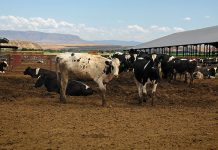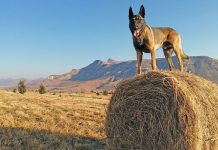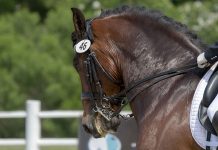The attractive Senecio elegans is widespread in South Africa and is a strong contender for horticultural exploitation.
With sound veld management Senecio infestation and poisoning can be avoided, writes Cameron McMaster.
Senecio barbatus, one of the more bizarre but attractive members of the genus, is widespread in the summer rainfall grassland region.
FROM TOP TO BOTTOM:
• Senecio macrospermus is a large and elegant plant from the high altitude grassland of the Drakensberg and Lesotho.
• Senecio polydon, photographed at Tordoon near Hogsback, one of the more beautiful members of the genus.
• Senecio isatideus is typical of the toxic Senecio that tend to dominate in degraded veld.
For most livestock farmers Senecio has negative connotations, since plants that belong to this group are responsible for a great many cases of livestock poisoning.
Under certain conditions Senecio species, if ingested, can result in major losses. So, it’s especially important for livestock breeders, who own land where these plants might occur, to get to know them and to manage their veld and grazing strategy to minimise the chances of stock losses from poisoning.
Senecio is a large genus of annual or perennial herbs, shrubs, small trees and vines classified within the daisy family, Asteraceae (see Farmer’s Weekly 22 February). It is a cosmopolitan genus of some 1 250 species, most of which occur in South America and Africa. There are about 300 species in Africa, so it could be an impossible task for the layman to get to know them all.
A superficial knowledge of the main features of the plants is, however, necessary to be able to recognise them, especially the dangerous and economically important species. Identification common feature of Senecio plants are their small, daisy-like flowers, each one of which is in reality a cluster of a large number of small flowers called florets, surrounded by a ring of what can be described as petals, but which are really modified florets, called ray-florets. T he specialised fruits when ripe are crowned with a ring of flat scales or thread-like bristles called the pappus, which aid in the dispersal of seeds by wind. In fact, the genus derives its name from these bristles or hairs from the Latin senex which means old man, alluding to the whitish grey, hairy pappus.
Senecio flowers are mostly yellow in colour, but there are species with beautiful mauve, purple and even white flowers. For instance, Senecio elegans and Senecio macrocephalus, with large bright mauve flowers are highly sought-after garden plants. Most gardeners will be familiar with the canary creeper (Senecio tamoides) which occurs in forests and festoons many a garden trellis, and makes a show in late autumn when covered with its bright yellow flowers. Senecio macrospermus is another large and elegant plant from the high altitude grassland of the Drakensberg and Lesotho.
It’s a popular garden plant in Europe and North America because it is able to survive cold winters. However, most Senecio flowers are rather insignificant, but there are often a great many on each plant, creating quite a show when large and extensive populations, sometimes found in severely overgrazed and degraded veld, flower simultaneously. I n certain seasons Senecio decurrens, known locally as kanga bush, can completely dominate grassland in the Border area of the Eastern Cape, but it doesn’t persist for long. t is the poisonous Senecio that persist and eventually dominate in sour grassland that need to be taken seriously.
The culprit species are Senecio latifolius, Senecio burchellii, Senecio isatideus and a few other less important species. These are all highly toxic to ruminants and even horses, especially in early spring in degraded veld where they are the first to shoot and there is very little else to eat. When even small quantities are ingested, they cause severe liver damage which can be acute or chronic, depending on the degree of toxicity and the length of exposure to the plants. The condition caused by Senecio poisoning has been called Molteno disease because of the high incidence of this problem in the Senecio-infested Molteno district.
The condition’s correct name is seneciosis and it’s by no means confined to Molteno, instead occurring over a very wide area in sour grassland in the eastern parts of the country. Getting to know the dangerous ones The plants that cause this condition are very similar in appearance.
Here is a brief description from the very old publication South African Poisonous Plants by LH Walsh published by Maskew Miller in 1909: “From a tough spike-shaped root several stems shoot up to the height of about two feet (60cm), being crowned with clusters of small yellow flowers, resembling small sunflowers. The branches, which start from the stem about half way up usually attain about the same level, so that all the flowers are on top of the plant.
The leaves are narrow and pointed at the ends. They are not stalked, but adhere directly to the stem, and are mostly situated on the lower portions of the plant.” In my career as a sheep and wool officer in the Stutterheim area, I was regularly confronted with this condition. There is very little that can be done to save affected animals and prevention is far better than cure. Here are a few basic rules to avoid seneciosis: Good veld management is crucial for a good supply of palatable grass. Avoid overstocking to ensure animals aren’t hungry and forced to eat poisonous plants. Senecio becomes dominant in overstocked and degraded veld.
Spring is the dangerous time when Senecio plants shoot and are at their most toxic stage. Rest veld after a burn until Senecio plants mature and become less toxic. Avoid moving animals from Senecio-free areas to Senecio infested areas in spring when the plants are toxic – such animals will eat it and probably die.
Animals that are reared on Senecio-infested veld are familiar with it and avoid it. I have observed the most severe losses in animals translocated from clean areas to Senecio veld in spring. Autumn is a safer time to move them. Avoid moving weaned lambs from pasture to Senecio veld in spring, especially burned veld where Senecio is prevalent. They are inexperienced, eat it and die. If there is enough to eat, older animals learn to avoid it.
The application of sound conservation practices has been the theme repeated in this series. With sound veld management Senecio infestation and poisoning can be avoided. Such practices benefit biodiversity, the environment and the animals that utilise it, landowners and posterity. Contact Cameron McMaster at [email protected]. |fw








